Parker SSD drives help British Airways achieve 95% energy reduction for air handling systems
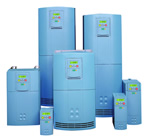
British Airways is using the latest variable speed drive technology to cut energy consumption by up to 95%, on air handling and environmental control systems installed in flight simulator cells at its Flight Training centre at Heathrow Airport. Developed and manufactured by Parker Hannifin, the world’s leading manufacturer of motion and control technologies, the variable speed drives (VSD) are a key part of a long term project to upgrade British Airways’ 18 simulator cells, and are helping to cut energy and overall maintenance costs, and to ensure that each flight simulator is available 24 hours a day, 7 days a week.
The British Airways Flight Training (BAFT) centre at Heathrow offers CAA and JAA approved training and familiarisation courses on a wide range of aircraft, including Boeing 737, 757, 767, 747, 777 and Airbus A320. The facility is the largest civil aviation training centre in the UK, and trains BA’s own flight crews and those of other major passenger airlines and cargo carriers.
The site on which BAFT is located is managed by British Airways Properties, which has set up an Energy Saving Working Group tasked with energy saving initiatives throughout Heathrow, from offices to aircraft hangers. Alan Glenister, British Airways Property Manager explains that, “The flight simulators make BAFT one of the heavier users of power, so investment in energy saving initiatives in this area can give large reductions in emissions and improve our overall carbon footprint, in line with our corporate strategy on sustainability”.
Availability is a key requirement, as Brian Woodgate, Senior Simulator Development Engineer, points out, “Our 14 full flight and four fixed base simulators are in constant demand, with training courses being fitted around the operational rotas of flight and cabin crews. It is therefore crucial that each simulator is available around the clock and functions efficiently and reliably. We are currently undertaking a scheduled programme of upgrades that are designed to improve the overall energy efficiency of the training centre by reducing energy consumption and costs.”.
Each simulator is in a self-contained cell, which incorporates specialised computer and hydraulics rooms for driving the flight simulator, plus dedicated environmental control systems. These are designed to maintain the ambient temperature within set limits, providing cooling for the complete cell area, including the computer and hydraulics plant, and the enclosed flight deck within the simulator.
Senior Engineering Technician, Dennis Doody, emphasises that the performance of each environmental control system is critical, “Both for the comfort of trainers and crews and to ensure that all equipment operates efficiently. For example, each simulator uses three image projectors to create the high definition 3D images seen through the cockpit windows. The image is projected onto a curved mirror, mounted within the body of the simulator, with a thin Mylar outer layer that is held in place by vacuum. Changes in ambient temperature can affect the operation of the vacuum pump which, in turn, can adversely affect the magnification, clarity and realism of the projected image”.
Previously, the air handling units in each simulator cell used an arrangement of motor-driven fans that were continuously driven at maximum speed, regardless of actual demand. As Dennis Doody points out, “This was extremely inefficient, in terms of both energy consumption, and wear and tear on components such as motor bearings, drive shafts and belts, and made it difficult to achieve precise control of the environmental conditions in each cell. Indeed, the air handling systems were accounting for a significant proportion of all energy used in each cell”.
As part of a long term programme to upgrade all its existing simulator cells, British Airways therefore took the decision to redesign each air handling system and has worked closely with Parker; also with Trend, who supplied the building service control (BMS), and Emcor, who carried out the engineering work.
Each of the air handling systems uses a large fan, typically driven by a single 11kW motor to draw air into the air ducts, from where it is passed through a pre-heater and then either a cooling or heating battery depending on ambient temperatures. An extraction fan sized between 4 & 16 kWs, with recirculation ductwork is used to maintain atmospheric pressure in the cell. A series of dampers is used to control the air flow and draw in outside air if the external temperature is lower, in order to benefit from a free cooling effect.
In this upgrade, the original fan motors are retained and are now controlled by the latest Parker 650V AC variable speed drives, interconnected via the Trend management unit. This enables the fans to be driven slowly or at idling speeds for the most of the year, saving power, with the capability of running at maximum output during especially warm weather. The drives are designed to be easy to configure, even in complex open-loop applications, and to provide a wide range of power outputs and options. Dennis Doody has experience with drives from many different suppliers and feels that the Parker units are, “Among the best available. They are simple and straightforward to use, with extensive functionality, while their modular design makes it easy for us if we need to make later changes to our control panels. Just as importantly, given our requirement to keep our simulators available 24x7 is the fact that Parker manufactures in the UK and offers excellent local technical support and immediate access to replacement parts.”
The modified air handling systems with the new Parker 650V drives have already been fitted to two of the simulator cells, and are producing significant energy savings. Brain Woodgate concludes, “The combined Parker and Trend system is enabling us to reduce our energy consumption in each cell by a massive 95%, while at the same time cutting costs in other areas. For example, we previously needed to change filter elements every three months; now we only to fit new elements once a year, while wear on moving parts such as bearings has been considerably reduced so our motors last longer with less routine maintenance. Also, as the air handling units now run for most of the time at low speeds the overall noise level in each simulator cell has decreased, improving working conditions. Finally, and most importantly, these upgrades using Parker variable speed drives and Trend control technologies are extremely cost effective, giving us a payback period of under two years, and the ability immediately to reduce our carbon footprint.”
Similar articles
More from Parker Hannifin
- Flange system gains new certification for marine applications 4th June 2021
- New generation of oil condition monitoring technology 2nd June 2021
- Parker introduces new low GWP refrigeration dryer series 24th November 2020
- Steering into the future for mobile machinery 17th November 2020

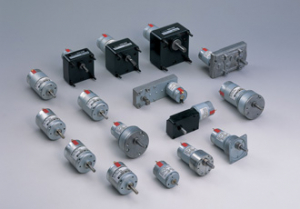
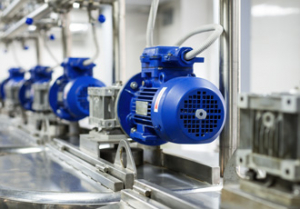
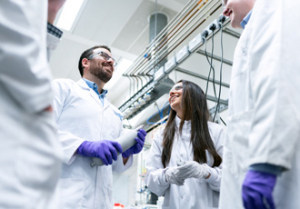
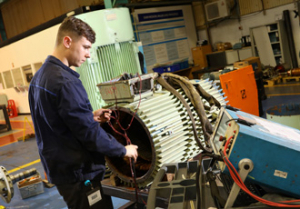







Write a comment
No comments